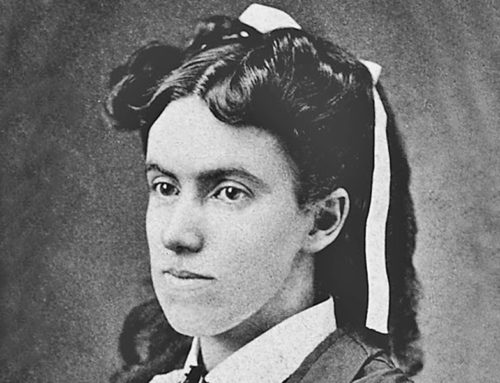

“For the Word of God is living and powerful, and sharper than any two edged sword, piercing even to the division of soul and spirit, and of joints and marrow, and is discerner of the thoughts and intents of the heart.” —Hebrews 4:12
The Death of St. Jerome, September 30, A.D. 420
 is given name was Sophronius Eusebius Hieronymus but he has come down to us in history as Saint Jerome. Of course all Christians are saints according to the New Testament, but the Church has not always been punctilious about what the Scriptures actually teach. Born in A.D. 347 in a small town on the border of Dalmatia in northern Italy, He spoke Illyrian but learned Latin when he went to Rome for education. After living a life of sinful indulgence, he came under great conviction. Jerome took up personal studies with a scholar in Gaul and developed many Christian friendships as he pursued translation work. He left for the Middle East with several of those friends and settled in Antioch.
is given name was Sophronius Eusebius Hieronymus but he has come down to us in history as Saint Jerome. Of course all Christians are saints according to the New Testament, but the Church has not always been punctilious about what the Scriptures actually teach. Born in A.D. 347 in a small town on the border of Dalmatia in northern Italy, He spoke Illyrian but learned Latin when he went to Rome for education. After living a life of sinful indulgence, he came under great conviction. Jerome took up personal studies with a scholar in Gaul and developed many Christian friendships as he pursued translation work. He left for the Middle East with several of those friends and settled in Antioch.

Eusebius Sophronius Hieronymus, better known as Saint Jerome (c. A.D. 342 – A.D. 420) in his study
His desire for the solitary life led him to abandon his classical studies and join monastic teachers near the ancient town of Chalcis, where he studied and mastered Hebrew and Greek. His singular intensity of study and formidable intellectual understanding brought him to the notice of the Church hierarchy. They ordained him in Antioch and declared him a bishop “without pastoral responsibilities.” Jerome attached himself to a renowned Cappadocian father by the name of Gregory of Nazianzus, in the great city of Constantinople. His mastery of biblical theology under Nazianzus, and commitment to Trinitarian convictions, provided the groundwork of his life’s mission. After two years, Jerome returned to Rome and became secretary to Pope Damasus in 382.

Jerome moved to Chalcis, and later to Bethlehem

Pope Damasus (c. A.D. 305-384)
Jerome moved to Bethlehem, where he lived the rest of his memorable life. His immense scholarship led to broad correspondence with other fathers of the Church, as well as the compilation of a bibliography of Christian authors and his own commentaries on the books of the Bible. In the year 382, Pope Damasus commissioned the thirty-five-year-old scholar to produce a Bible in Latin translation that could be used by the entire Church. Most literate people of the Roman Empire spoke and wrote in that language, yet there were dozens of translations, some written by heretics with gnostic or Arian agendas.
As missionaries have done in other languages through the ages, Jerome began with translating the Gospels from Greek into Latin. He followed that project by completing a translation of the entire New Testament, perhaps with the help of other scholars of like Trinitarian convictions. He next tackled the Book of Psalms, and eventually the other books of the Old Testament from the Hebrew rather than the Septuagint. It took fourteen more years to complete the Old Testament in Latin. Fourteen religious books of the Jewish non-canonical tradition, known as the Apocrypha, were next on the agenda and were included as intertestamental readings.

Page from Codex Amiatinus, the earliest surviving complete manuscript of the Latin Vulgate Bible, produced c. A.D. 700
Jerome’s Latin translation became known as the Vulgate, and was used as the official standard text in the Church for the next thousand years, although there were a few vernacular translations in a few places in Christendom. At the time of the Protestant Reformation in the 16th Century, the Pope called together a Church Council at Trent and there the Latin Vulgate with the Apocrypha was declared the authoritative Latin Bible. The Roman Catholic Church of today still respects and uses the Vulgate as the historic translation of the Scriptures but allows for modern updates of theological interpretation as scholarship deals with the original languages.

A the Council of Trent (1545–63) the Latin Vulgate with the Apocrypha was declared the authoritative Latin Bible
Jerome corresponded with other theologians of his day, especially Augustine. He excelled in apologetics also and defended Church dogma against challengers, affirming celibacy of the clergy, perpetual virginity of Mary, and other ascetics’ staples of dubious biblical origin. His writings are second only to Augustine in volume, and his commentaries and dogmatic productions are rejected by most Protestants as non-authoritative. Nonetheless, Jerome’s love of the Scriptures and lifetime pursuit of bringing a useful translation to Latin speakers, and to the liturgies of the church, make him a very important figure in Church history.

Saint Augustine of Hippo (A.D. 354-430)







